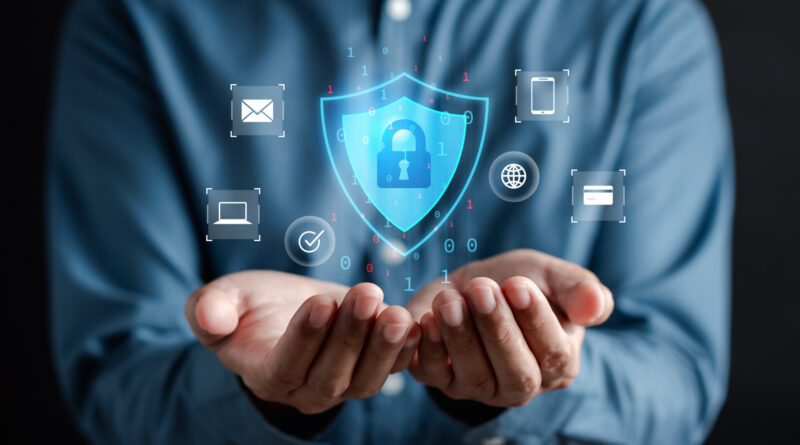How Can Businesses Protect Themselves from Growing Cyber Threats?
In today’s increasingly digital world, cyber threats have become one of the most pressing concerns for businesses of all sizes. With more operations, communications, and transactions taking place online, companies are more vulnerable than ever to cyberattacks. From ransomware and phishing scams to data breaches and advanced persistent threats (APTs), the landscape of cyber threats is constantly evolving, making it essential for businesses to take proactive steps to safeguard their operations.
Cybersecurity is no longer just an IT issue; it’s a critical aspect of every business. In this article, we will explore practical strategies and best practices that businesses can implement to protect themselves from the growing cyber threats that could otherwise compromise their data, finances, and reputation.
1. Develop a Comprehensive Cybersecurity Strategy
The first step in protecting a business from cyber threats is to develop a comprehensive cybersecurity strategy. This plan should be tailored to the specific needs and risks of the organization and should involve a multi-layered approach to cybersecurity.
- Risk Assessment: Start by conducting a thorough risk assessment to identify potential vulnerabilities and assess the value of the data and systems that need protection. Understanding which assets are most at risk will help prioritize resources and cybersecurity efforts.
- Security Frameworks: Implement established cybersecurity frameworks such as the National Institute of Standards and Technology (NIST) Cybersecurity Framework or ISO/IEC 27001. These frameworks provide guidance on risk management, incident response, and best practices for protecting digital assets.
- Cybersecurity Policies: Create clear and comprehensive cybersecurity policies for employees, contractors, and vendors. This ensures that everyone understands their responsibilities regarding data protection and the security measures they must follow.
2. Invest in Advanced Cybersecurity Tools and Software
Technology plays a central role in protecting businesses from cyber threats. Investing in the right cybersecurity tools and software can greatly enhance a business’s ability to detect, prevent, and respond to cyberattacks.
- Firewalls and Antivirus Software: Ensure that all endpoints (computers, servers, mobile devices) are protected with firewalls and antivirus software. Firewalls act as barriers between your network and external threats, while antivirus software helps detect and block malicious files.
- Encryption: Implement encryption to secure sensitive data both in transit and at rest. Encryption ensures that even if data is intercepted, it remains unreadable without the appropriate decryption key.
- Intrusion Detection Systems (IDS) and Intrusion Prevention Systems (IPS): IDS and IPS can monitor network traffic for signs of unauthorized access or malicious activity. These systems can detect and block suspicious traffic before it compromises your network.
- Endpoint Protection: As employees increasingly use mobile devices and remote work becomes more common, it’s important to have robust endpoint protection in place. Endpoint security solutions can help protect devices from malware, phishing attempts, and other cyber threats.
3. Conduct Regular Employee Training
Human error remains one of the most significant causes of cyberattacks. Cybersecurity awareness and training should be a continuous process, helping employees understand the latest threats and best practices for avoiding them.
- Phishing Awareness: Train employees to recognize phishing emails, suspicious links, and other common tactics used by cybercriminals to gain access to sensitive information. Phishing remains one of the most effective methods of cyberattacks, and educating employees can significantly reduce this risk.
- Password Hygiene: Encourage employees to use strong, unique passwords and implement multi-factor authentication (MFA) for added security. Passwords should be regularly updated, and companies should adopt password management tools to ensure they are not reused or weak.
- Social Engineering Awareness: Provide training on social engineering tactics, such as phone calls or fake websites designed to deceive employees into revealing sensitive information. Social engineering is a growing threat, and employees should be taught to verify the legitimacy of requests for information.
4. Back Up Critical Data Regularly
In the event of a cyberattack, such as ransomware, having secure and up-to-date backups of critical data is essential. Ransomware attacks can render business data inaccessible or demand payment for its release, and having backups can be the key to recovering quickly.
- Regular Backups: Ensure that backups are taken regularly and stored securely, either in the cloud or on off-site storage. Backup systems should be tested periodically to ensure data can be successfully restored.
- Separation of Backups: Keep backups separate from your main network to prevent them from being infected by ransomware or other malicious software. Cloud-based backup services often offer additional layers of security to protect against cyber threats.
- Versioning: Implement data versioning to ensure that backups are not only available but also intact and recent. Versioning allows you to roll back to previous versions of data if newer ones are corrupted by a cyberattack.
5. Implement Strong Access Control and Authentication
Limiting access to sensitive data and systems is a critical aspect of cybersecurity. By ensuring that only authorized individuals have access to critical systems, businesses can reduce the potential attack surface.
- Role-Based Access Control (RBAC): Implement RBAC to ensure that employees only have access to the data and systems necessary for their roles. This reduces the risk of unauthorized access to sensitive information.
- Least Privilege Principle: Apply the principle of least privilege, meaning that users should only have the minimum necessary privileges to perform their tasks. This helps mitigate the risk of insider threats and accidental data breaches.
- Multi-Factor Authentication (MFA): Use MFA to add an extra layer of security to sensitive accounts and systems. Even if a password is compromised, MFA requires an additional factor (e.g., a code sent to a mobile device) to grant access.
6. Monitor and Respond to Cyber Threats in Real-Time
Cyber threats are constantly evolving, so businesses must continuously monitor their networks for signs of malicious activity. Having a dedicated cybersecurity team or using a managed security service provider (MSSP) can help businesses stay ahead of threats.
- Real-Time Monitoring: Implement continuous monitoring tools that track network activity, detect anomalies, and identify potential threats in real time. Early detection can help mitigate damage and prevent breaches from spreading.
- Incident Response Plan: Develop and regularly update an incident response plan. This plan should outline the steps to take in the event of a cyberattack, including identifying the source of the breach, containing the threat, and restoring normal operations. Having a prepared response can reduce the impact of an attack.
- Cyber Threat Intelligence: Stay informed about emerging cyber threats by subscribing to cybersecurity intelligence feeds. This can provide early warnings of new attack methods and help businesses adjust their defenses accordingly.
7. Collaborate with Third-Party Security Experts
Many businesses partner with third-party vendors to provide critical services. However, these relationships can expose businesses to additional cybersecurity risks if not properly managed.
- Third-Party Risk Management: Conduct due diligence on third-party vendors to ensure that they have robust cybersecurity practices in place. A vulnerability in a vendor’s network can become a vulnerability in your own, so it’s crucial to assess their cybersecurity posture.
- Third-Party Audits: Consider working with cybersecurity experts or consultants to perform regular security audits and vulnerability assessments. These professionals can identify weaknesses and recommend ways to enhance your defenses.
8. Stay Updated with Patches and Software Updates
Cybercriminals frequently exploit unpatched vulnerabilities in software and systems. To protect your business, it’s crucial to stay on top of software updates and patches to fix known vulnerabilities.
- Automated Updates: Where possible, enable automated updates for software and systems to ensure that patches are applied as soon as they become available. This minimizes the risk of exploitation through outdated systems.
- Patch Management Process: Establish a formal patch management process to track and prioritize software updates. Critical systems should be patched first to ensure they are protected from known threats.
Conclusion
As cyber threats continue to grow in both sophistication and frequency, businesses must take proactive steps to protect themselves. By developing a comprehensive cybersecurity strategy, investing in the right tools and training, and implementing best practices for data protection, businesses can significantly reduce the risk of falling victim to cyberattacks.
Cybersecurity is not a one-time fix; it requires ongoing attention and adaptation to emerging threats. By staying vigilant and continually improving security measures, businesses can safeguard their operations, protect sensitive data, and maintain the trust of their customers and partners.

